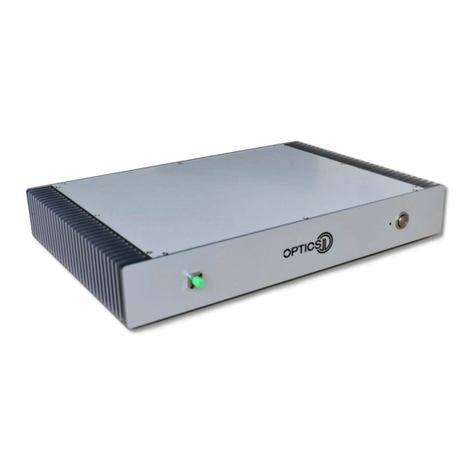8optics11.com
The Optics11 OP1550 interferometer operates independently of the other components and can be
switched on and off at any time. The Piuma controller box powers the Piuma indenter head and
communicates with the software running on the PC and should not be switched off before exiting
the Piuma nanoindentation software suite. The software will automatically detect and connect to
Piuma components connected to the PC. For the best user experience, it is recommended to first
power on all peripheral components before running the software.
1.2 Connecting components
Together with the Piuma Nanoindenter the following cables are provided:
o2x BNC connector cables
o1x DVI signal cable
o2x Power cable
o1x PC power cable including adapter
o2x USB (B-type) connector cable
o50ΩTerminator
When installing the system, please carefully follow the scheme below (Figure 3).
Figure 3: Schematic drawing of the connections that are required to set-up the Piuma Nano-indenter.
The controller box is connected to the computer using one of the two USB ‘HUB’ connectors on the
back of the Piuma controller, and a free USB slot on the PC (must be a USB3.0 port). The Piuma
indenter head is connected to the controller box using the original DVI cable supplied with the
Piuma system, and a BNC cable connecting the BNC output on the indenters’ backpanel to the




























